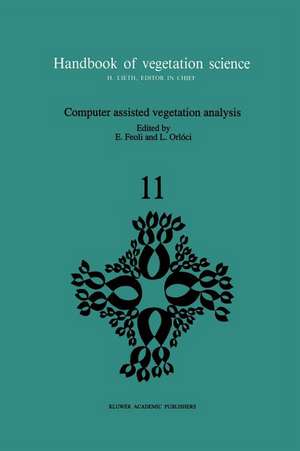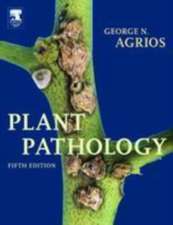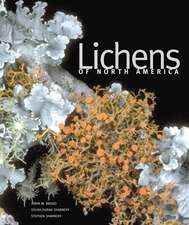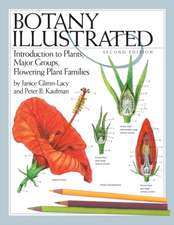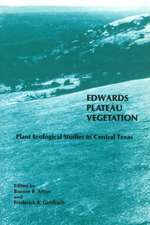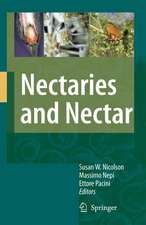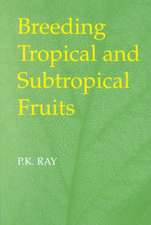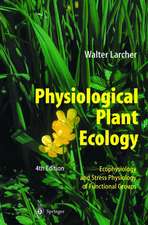Computer assisted vegetation analysis: Handbook of Vegetation Science, cartea 11
Editat de E. Feoli, L. Orlócien Limba Engleză Hardback – 30 noi 1991
| Toate formatele și edițiile | Preț | Express |
|---|---|---|
| Paperback (1) | 1842.16 lei 6-8 săpt. | |
| SPRINGER NETHERLANDS – 23 oct 2012 | 1842.16 lei 6-8 săpt. | |
| Hardback (1) | 1839.50 lei 6-8 săpt. | |
| SPRINGER NETHERLANDS – 30 noi 1991 | 1839.50 lei 6-8 săpt. |
Din seria Handbook of Vegetation Science
- 20%
 Preț: 612.65 lei
Preț: 612.65 lei - 18%
 Preț: 1228.96 lei
Preț: 1228.96 lei - 18%
 Preț: 1241.25 lei
Preț: 1241.25 lei -
 Preț: 403.37 lei
Preț: 403.37 lei - 18%
 Preț: 1234.00 lei
Preț: 1234.00 lei - 15%
 Preț: 645.47 lei
Preț: 645.47 lei - 18%
 Preț: 1845.65 lei
Preț: 1845.65 lei - 18%
 Preț: 1221.69 lei
Preț: 1221.69 lei - 18%
 Preț: 1227.36 lei
Preț: 1227.36 lei - 15%
 Preț: 659.53 lei
Preț: 659.53 lei - 15%
 Preț: 642.82 lei
Preț: 642.82 lei - 18%
 Preț: 954.93 lei
Preț: 954.93 lei - 15%
 Preț: 649.54 lei
Preț: 649.54 lei -
 Preț: 382.50 lei
Preț: 382.50 lei - 20%
 Preț: 603.16 lei
Preț: 603.16 lei - 18%
 Preț: 1218.53 lei
Preț: 1218.53 lei - 18%
 Preț: 1847.35 lei
Preț: 1847.35 lei -
 Preț: 392.75 lei
Preț: 392.75 lei
Preț: 1839.50 lei
Preț vechi: 2243.28 lei
-18% Nou
Puncte Express: 2759
Preț estimativ în valută:
352.10€ • 382.59$ • 295.95£
352.10€ • 382.59$ • 295.95£
Carte tipărită la comandă
Livrare economică 21 aprilie-05 mai
Preluare comenzi: 021 569.72.76
Specificații
ISBN-13: 9780792311263
ISBN-10: 0792311264
Pagini: 498
Ilustrații: IX, 498 p.
Dimensiuni: 210 x 279 x 29 mm
Greutate: 1.1 kg
Ediția:1991
Editura: SPRINGER NETHERLANDS
Colecția Springer
Seria Handbook of Vegetation Science
Locul publicării:Dordrecht, Netherlands
ISBN-10: 0792311264
Pagini: 498
Ilustrații: IX, 498 p.
Dimensiuni: 210 x 279 x 29 mm
Greutate: 1.1 kg
Ediția:1991
Editura: SPRINGER NETHERLANDS
Colecția Springer
Seria Handbook of Vegetation Science
Locul publicării:Dordrecht, Netherlands
Public țintă
ResearchCuprins
I.- 1. The properties and interpretation of observations in vegetation study.- Sampling.- 2. Computerized sampling in vegetation studies.- 3. Sampling with multiple objectives and the role of spatial autocorrelation.- 4. On sample size optimality in ecosystem survey.- 5. Statistics in ecosystem survey: computer support for process-based sample stability tests and entropy/information inference.- 6. Computer simulation and sampling efficiency.- Databases.- 7. The relational model for data bases in community studies.- Characters and Character Selection.- 8. On character-based plant community analysis: choice, arrangement, comparison.- 9. Fuzzy components in community level comparisons.- 10. Fuzzy linguistics concept in redescription of vegetation data.- 11. A comparison of some methods of selecting species in vegetation analysis.- Similarity Measures.- 12. Mutational and nonmutational similarity measures: a preliminary examination.- 13. Application of probabilistic methods in the analysis of phytosociological data.- Classification.- 14. Knowing when to stop: cluster concept—concept cluster.- 15. Fuzzy clustering of ecological data.- 16. A method for generating consensus partitions and its application to community classification.- 17. A general strategy for the simultaneous classification of variables and observations in ecological data tables.- Evaluation of Classification.- 18. Locality theory: the phenomenon and its significance.- 19. Permutation techniques based on euclidean analysis spaces: a new and powerful statistical method for ecological research.- 20. Comparison of fuzzy classifications.- Ordination.- 21. Flexible gradient analysis: a note on ideas and an application.- 22. Ordination based on classification: yet another solution?.- 23. Syntaxonomy: a source ofuseful fuzzy sets for environmental analysis?.- 24. Community niche, an effective concept to measure diversity of gradients and hyperspaces.- 25. On niche separation and its measurement.- 26. Autocorrelation for measuring predictivity in community ecology: an example with structural and chorological data from mixed forest types of NE Italy.- 27. Testing for elliptical clusters in ecological multidimensional spaces.- 28. Spatial interpolation methods for interpretation of ordination diagrams.- 29. Coexistence of competing populations along an environmental gradient: a simulation study.- 30. Regression modelling of perturbation in some vegetation types.- Analysis of Spatial Patterns.- 31. The measurement of horizontal patterns in vegetation: a review and proposals for models.- 32. Trend surface analysis and splines for pattern determination in plant communities.- 33. Edge detection in vegetation: Jornada revisited.- 34. Spatial competition models for plant populations.- II Computer Packages.- 35. DENT: A PASCAL program for vegetation data entry into microcomputers.- 36. Introduction to data analysis: a comprehensive program package for personal computers.- 37. MULVA-4, a processing environment for vegetation analysis.- 38. FIVEPA, a program package to perform comparisons of sets by information and other functions.- 39. SYN-TAX IV. Computer programs for data analysis in ecology and systematic.- 40. Probabilistic methods in classification: a manual for seven computer programs.- 41. NICHE — Programs for niche breadth, overlap and hypervolumes.- 42. PATT — Spatial autocorrelation analysis: computer program and examples of application with data sets of grassland vegetation under a natural reforestation process in the Karst near Trieste.
